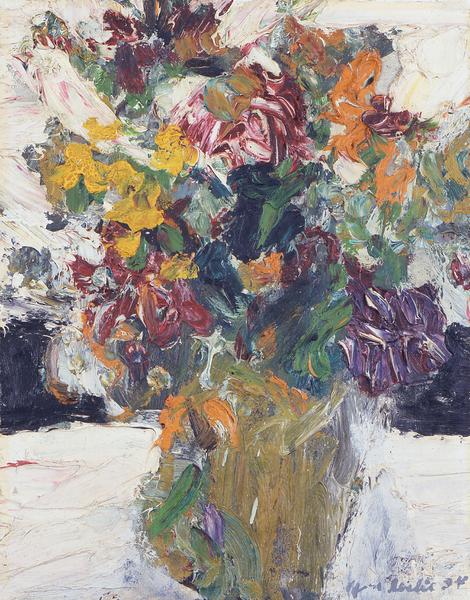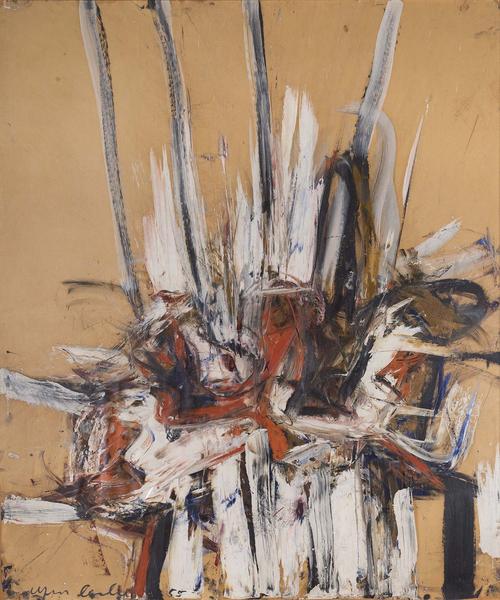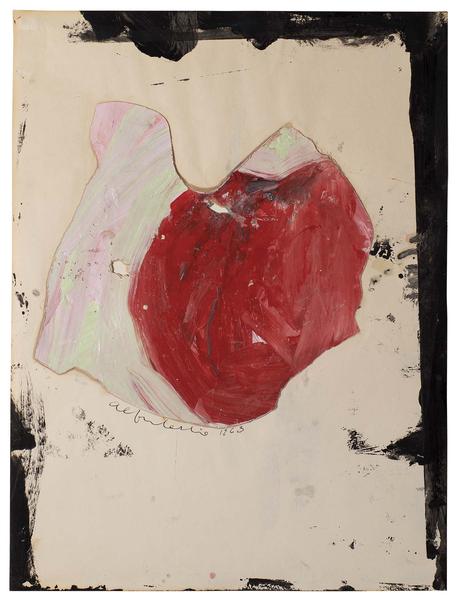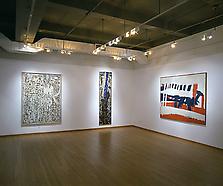“To most people, reality is a confirmation of their expectation. Art can present an alternative to what people think they see or to what they expect to see.” *
Although he may be better known for his larger-than-life-sized, grisaille, figural paintings, Alfred Leslie spent the 1950s working in an abstract expressionist vein, creating paintings of explosive color as well as small-scale abstract works on paper. Leslie was born in 1927 to German-Jewish immigrant parents and raised in the Bronx. He developed an early interest in multiple forms of visual art—drawing, sculpting, taking and developing photographs, and shooting film all before the age of fifteen. During World War II, Leslie joined the United States Coast Guard, and in 1947, he used funding from the GI Bill to attend classes at the Art Students League and at New York University where, from 1947 to 1949, he studied with William Baziotes and Tony Smith, among others. In 1949, Clement Greenberg selected Leslie’s work for inclusion in his New Talent exhibition at the Kootz Gallery. At the same time, MoMA held a screening of Leslie’s third film, Directions: A Walk after the War Games.
During the 1950s, Leslie’s studio became an important meeting place for New York artists, and Leslie was also a regular presence in the world of abstract expressionism, frequenting the Cedar Bar and participating in the 1951 Ninth Street Show. His work of the 1950s included collages and paintings—bold rectangles and squares of color that filled the canvas or paper, competing for space, clashing and complementing one another. Leslie met with great success, and his work was shown widely in New York—at MoMA, the Jewish Museum, and the Whitney—and abroad, particularly in Tokyo and Paris. Not content to limit himself to one mode of expression, Leslie continued to make films, including Pull My Daisy (1959), which featured Allen Ginsburg and Jack Kerouac. In 1960, he published The Hasty Papers, a collection of artwork, poetry, and philosophy with contributions by Ginsberg, Kerouac, and Jean-Paul Sartre, among others. That same year, Leslie’s work was included in several major exhibitions including the São Paulo Biennale in Brazil and Sixty American Painters: Abstract Expressionist Painting of the 1950s at the Walker Art Center in Minneapolis.















